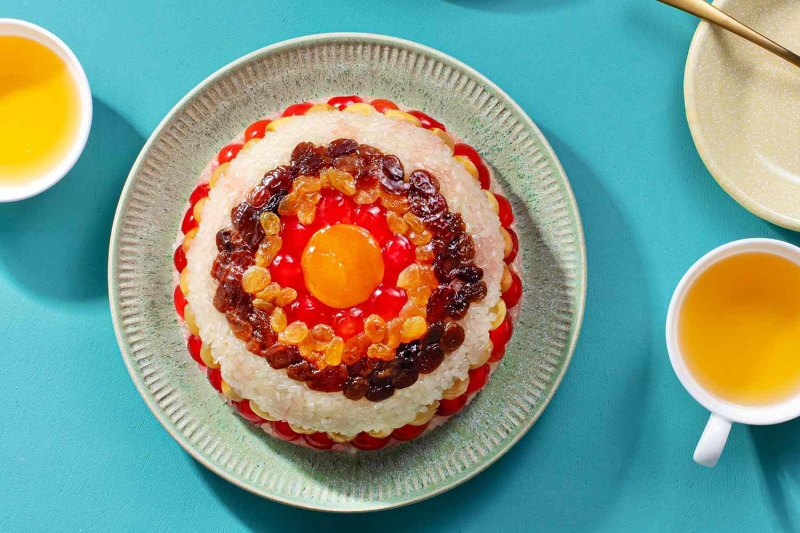“Too sweet, too sweet!” tends to be the elder outcry at every Chinese Lunar New Year celebration when it comes time for dessert. In fact, it’s such a predictable chorus across the culture that it’s become a common ABC—community slang for “American-born Chinese”—meme on social media. While the younger generation with Americanized palates happily down heavily frosted cakes, syrupy pies, and sugar-laden cookies without batting an eye, the elders are craving more traditional desserts which go much lighter on the sugar.
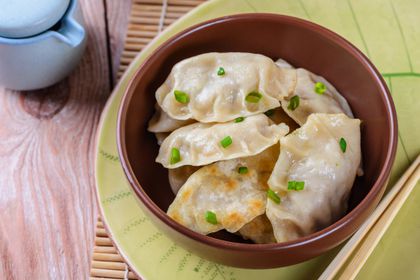
Chinese New Year is about honoring traditions and respecting those in the family with seniority. So for the annual Reunion Dinner on New Year’s Eve, contributing to the dessert course means catering to tradition and toning down the sugar by just a smidge. Whether you make or buy dessert for the annual Reunion Dinner on Lunar New Year, there are plenty of options to explore.
Set & Forget: Eight Treasure Rice Pudding

Eight treasure rice pudding is a colorful spectacle that evokes the Jell-O casseroles of American culinary lore, served chilled and formed in a pan with a variety of colorful ingredients interspersed. The legend goes that it was invented to honor eight warriors—a very auspicious number in Chinese culture, symbolizing prosperity and wealth.
It’s made of whole grains of sticky rice enriched with a tiny bit of fat, filled with sweet red bean, mung bean, or lotus seed paste, then studded with different types of dried fruit in the balance of “treasures” left. They’re supposed to look like gems, so the more creative your design, the more impressive.
Come In Hot: Tangyuan
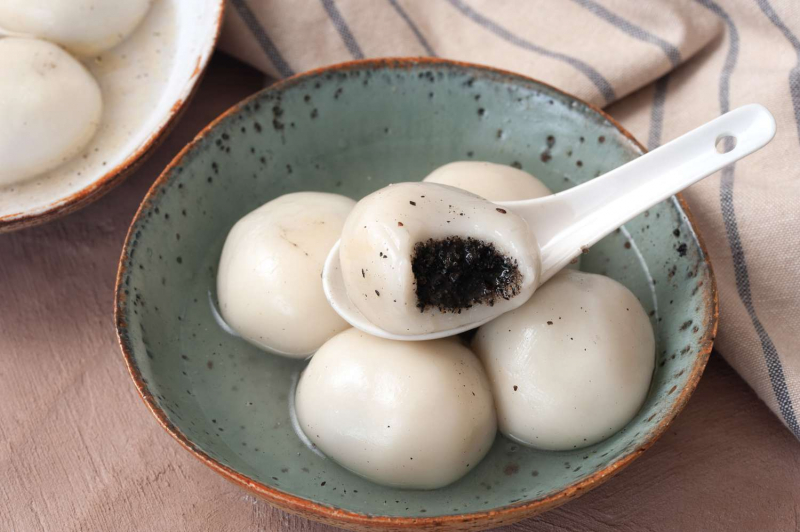
Warm desserts like tangyuan are especially comforting. These sticky, chewy rice flour balls with the texture of mochi, are stuffed with sweet or savory fillings before they’re boiled in water, which is then turned into a sugared broth. These are simple to make, yet open to creative interpretation. My dad’s signature is a chunky peanut butter filling, but many Chinese folks grew up with sesame, red bean paste, or sweetened tangerine peels in the middle. To make it even more eye-catching and lucky, feel free to dye them in shades of gold, orange, or red. Whatever you do, make sure they’re nicely rounded, as the shape is what makes them a favored dessert, symbolizing the wholeness of the family unit.
Fluffy & Fanciful: Fa Gao

Fa gao, or fortune cakes, are fluffy, risen flour buns with noticeable splits and cracks, firm peaks and crags. The superstition goes that the more defined those surface breaks are, the better the luck you’ll have in the new year. Home cooks have their own tricks on how to ensure larger splits and higher rise, but luckily, many Asian bakeries often carry them to save you the trouble.
Another steamed dessert is the ai wo wo, which resembles little snowballs. The outer layer is made of steamed sticky rice rolled with rice flour, but inside this snow white shell stuffings range from black sesame, walnut, hawthorn, Chinese yam, cashews, or raisins. Topped with a jujube, it’s especially endearing.
Versatile Classic: Nian Gao

Good news to those who are gluten-free: many traditional Chinese New Year treats are made of subtly sweet sticky rice or rice flour, not AP flour. Among the most venerated is nian gao. Most Chinese superstition is based on homophones, so the treat’s importance comes from the fact that its name sounds like “higher year,” signifying progress and growth in the new year.
Some families like to use cute molds as they do in Beijing, or add additional symbols of luck to the tops, such as various dried fruits, for embellishment and natural sweetness. Others fry it up after steaming to add a rich, caramelized finish for a toasty and warming last course.
A Study In Contrast: Jian Dui
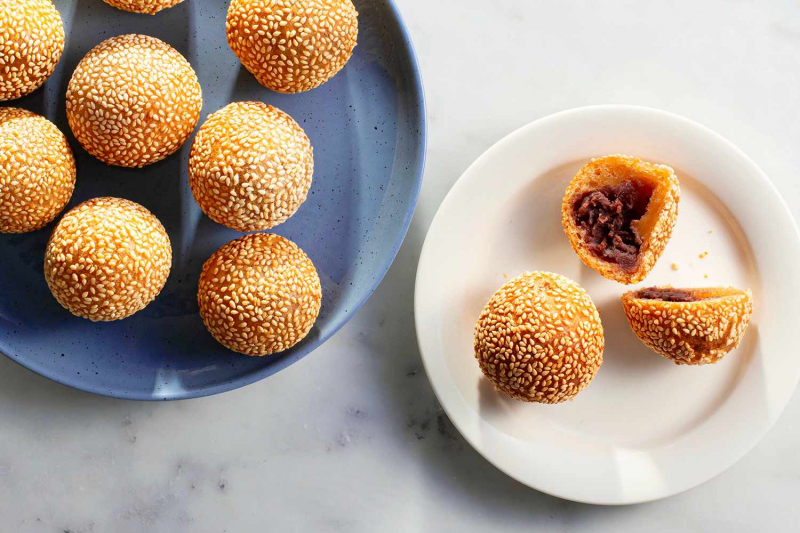
Sesame seed balls, or jian dui, are doubtless named after the toasty little seeds sprinkled liberally all over the spheres. They’re a deep-fried sweet made with glutinous rice flour, filled with a sweet paste, then rolled in white sesame seeds for added crunch. This exterior is a great contrast to the soft squishiness beneath the shell. They are a a beloved year-round Cantonese snack and a regular on dim sum cart circuits, but their lucky round shape makes them especially popular during the new year celebrations.
Let Them Eat Cake: Sponge Cakes
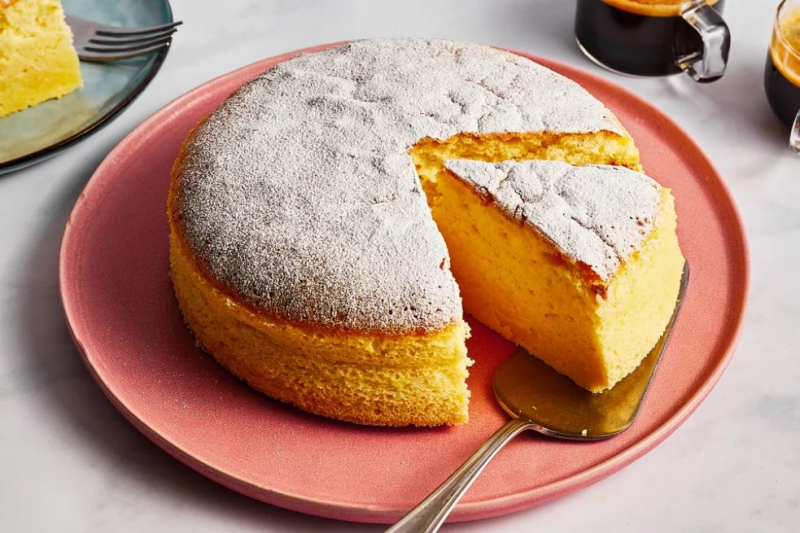
While it’s perfectly acceptable to bring a layered cake to Chinese New Year celebrations, Chinese cakes are different from what you would get at a typical American bakery. The cake itself is a mild sponge cake, extremely lightweight with small air pockets. If frosted, it is with a barely sweetened whipped cream frosting, never spread on thick. Chocolate usually appears only in decorative accents — a light drizzle or drip down the side.
Most distinctively, the decorations and filling aren’t the buttercream roses or thick jams or preserves used in American bakeries. They’re usually arrangements of fresh-cut fruit, like kiwis, strawberries, blueberries, mangoes, and grapes. Canned peaches are the only exception to this rule. For the filling, any combination of fruit is then folded into the same plain whipped cream used to frost the exterior. You’ll find this formula used at any Chinese and most Asian bakeries.
It’s not uncommon to tap into some Korean or Japanese influence either during Chinese Lunar New Year celebrations. Wobbly and soufflé-like Japanese cheesecake is chiffon rich, but a world away in terms of density and sweetness from your standard New York style cheesecake.
Sweet & Simple: Citrus Fruit
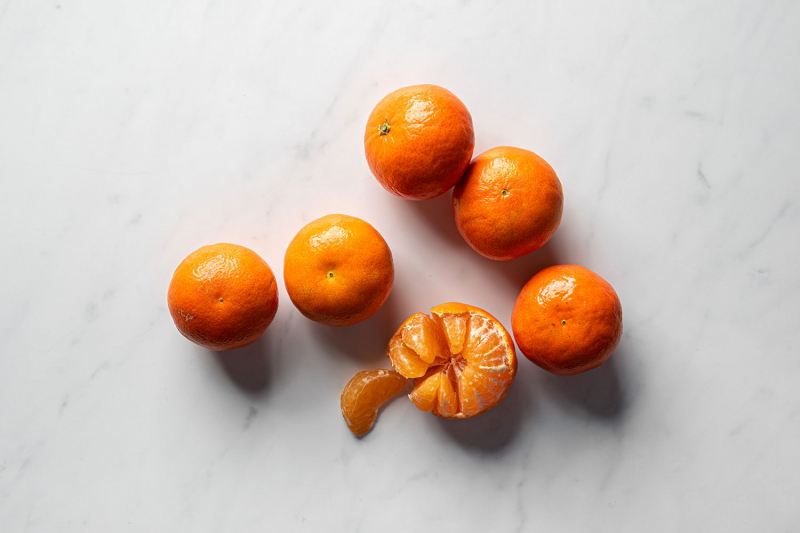
Like any Chinese New Year dinner feast, where overabundance is auspicious and leftovers are lucky, there’s a lot to take in and plenty of options when it comes to finishing off the Chinese New Year meal.
With so much focus and appetite reserved for the plethora of mains, it’s not only acceptable, but traditional, to bring something as simple as a bag of citrus like oranges, mandarins, tangerines, or pomelos for dessert. Most big Chinese meals, particularly banquets, tend to end with fruit as a palate-cleanser. The round shape of these fruits follows the theme of complete family unity and their sunny hue denotes gold for fortune. Make sure the fruits are unblemished, ripe, and that you avoid any amount which includes the unlucky number four (14, 40, 24, etcetera).
The most important contribution is to come with positivity, hope, and gratitude for the chance to gather with family. The past few years have made this an even bigger deal than it has already been for centuries, so if you’re in a position where you can bring yourself—and some dessert—to the gathering, it will be a sweet new year to come for sure.
